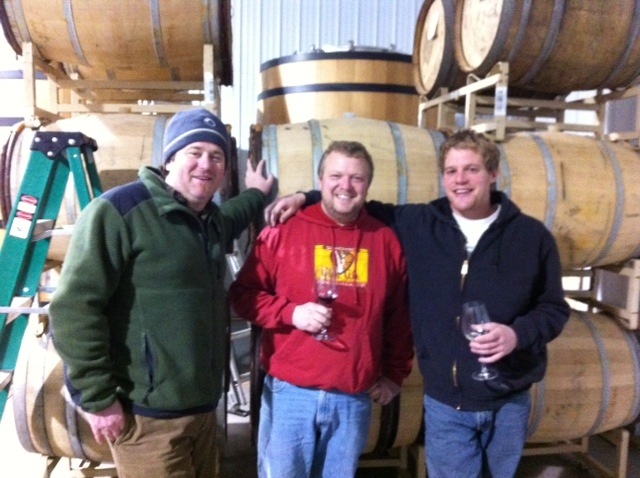By Evan Dawson, Finger Lakes Editor
 Two producers do not make a trend, but in any region there are trend-setters and trailblazers. In the Finger Lakes, Ravines Wine Cellars has been producing some of the strongest rieslings for the past decade. And newcomer Forge Cellars comes with the high expectations attached to the wines of Louis Barruol, a renowned winemaker from Gigondas in France.
Two producers do not make a trend, but in any region there are trend-setters and trailblazers. In the Finger Lakes, Ravines Wine Cellars has been producing some of the strongest rieslings for the past decade. And newcomer Forge Cellars comes with the high expectations attached to the wines of Louis Barruol, a renowned winemaker from Gigondas in France.
Both Ravines and Forge are now experimenting with old oak barrels when it comes to making riesling.
Ravines winemaker Morten Hallgren took the first step, selecting a portion of his 2010 Argetsinger Vineyard Riesling to be aged in old, neutral barrels. “It’s primarily for texture,” Hallgren recently explained. “The acidity is there. The flavors are there. The oak has nothing to do with flavors.”
That’s an important distinction, especially for Forge Cellars, which employs 100% old oak for its line of rieslings.
“Louis and I had a conversation about this some three or four years ago while sitting in Gigondas,” wrote Forge co-owner Rick Rainey in a recent blog post. “We were talking about cool climate wines, wines that are often coveted for their fresh, searing, laser-like acidity. We both were commenting how wonderful acid is and then he started to tell me about experiments he had done with high-acid whites in barrel and how wonderful they turned out. I thought it all made sense because if you look at all the cool climate regions of the world, using barrels of different sizes was the norm before the stainless steel manufacturers showed up.”
Like his co-owner Justin Boyette, Rainey loves discussing the history of wine. That deference to precedent comes through when he writes about Forge’s use of neutral barrels, as Rainey jokes that Forge should be considered anything but a “trend-setter.”
“Riesling being done in barrel has been around a heck of a lot longer than anyone at Forge Cellars,” Rainey explains. “If anything we are rolling back the clock a bit.”
Try as he might to downplay the freshness of this approach, the fact remains that in the Finger Lakes, riesling resides in stainless steel. Winemakers seek freshness in riesling without wanting to compromise the bracing edges, nor do they seek aromatics and flavors that oak can impart.
“The idea of hammering helpless little white wines with new oak is, well, lets just say, not for us,” Rainey says. “But the idea of letting a high-acid, fresh, laser-like riesling relax a bit in a nice aged barrel could make a whole bunch of sense.”
Wine writer Oz Clarke has written about riesling aged in oak, noting that it remains rather common in Germany, where producers in the Pfalz even occasionally employ new oak. But most, Clarke explains, opt for old barrels. “The flavors are quite obviously different (in rieslings aged in wood),” Clarke wrote in his book Grapes and Wines: The Definitive Guide to the World’s Great Grapes and the Wines They Make “The gentle oxygenation that occurs in old wooden barrels softens the edges of the wine and adds complexity. The choice is a stylistic one, with the steely style generally being seen as more modern.”
Hallgren noted that for now, Finger Lakes winemakers would have to use old barrique. But he’s trying to find a way to bring old casks to the states from Europe. “It’s quite an undertaking,” Hallgren said with a smile. “But we’re not giving up.”
What does that mean for consumers? For those who seek the electric, razor’s edge style of Finger Lakes riesling, Forge Cellars will probably come off as too rich, or too mellow, to borrow a word from Rainey. Ravines’ Argetsinger Riesling is likely to be more subtle and still quite cutting, considering its aging in both steel and wood. But for those who find many Finger Lakes rieslings to be too acidic, perhaps over-the-edge, this kind of treatment offers the potential to attract new palates. If the wood comes through too strongly, the wines will flop. If the wood imparts a richer texture while allowing the crisp acidity to remain fresh, it could be a significant regional step. And with more choices, consumers are likely to benefit.

